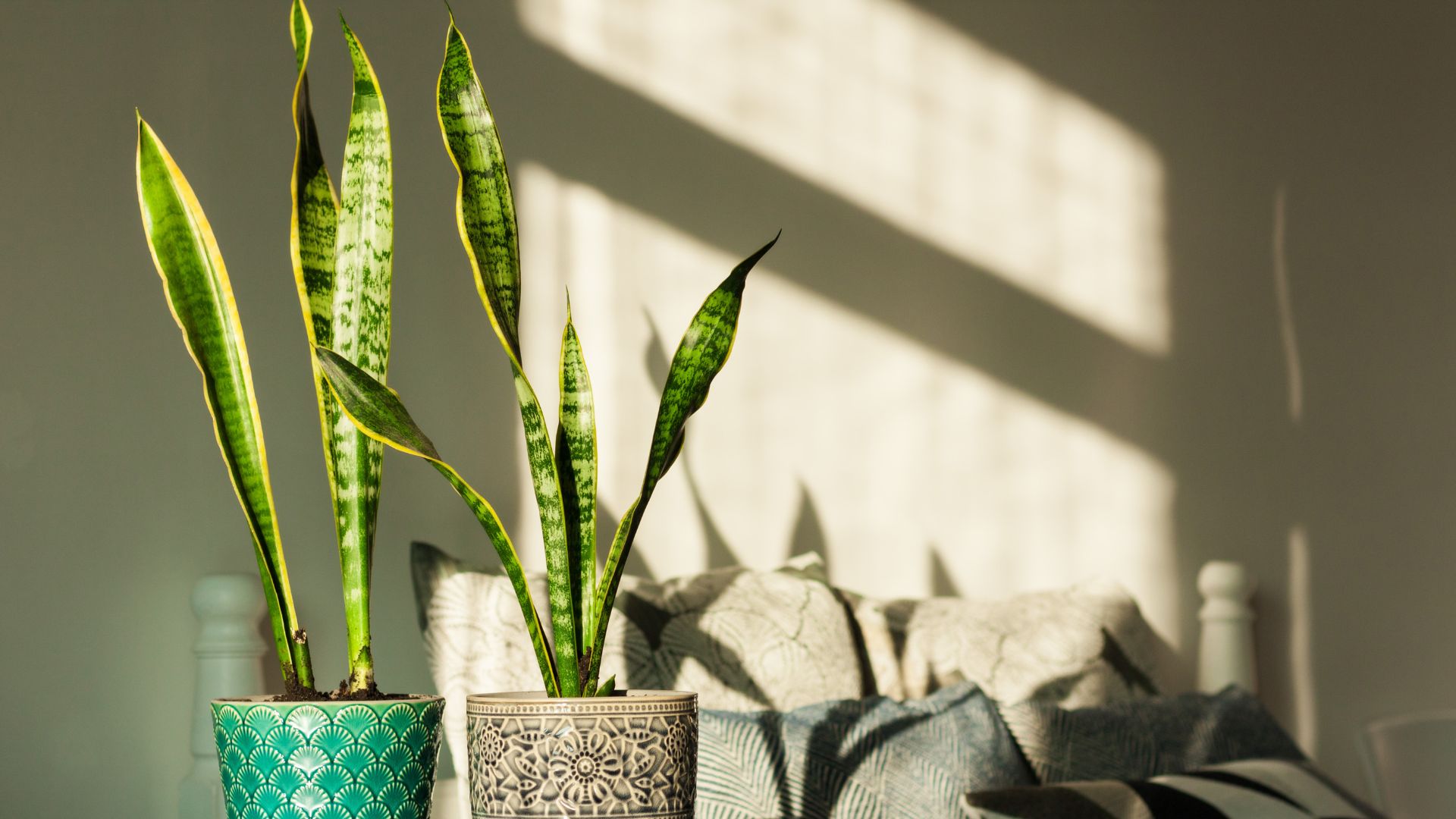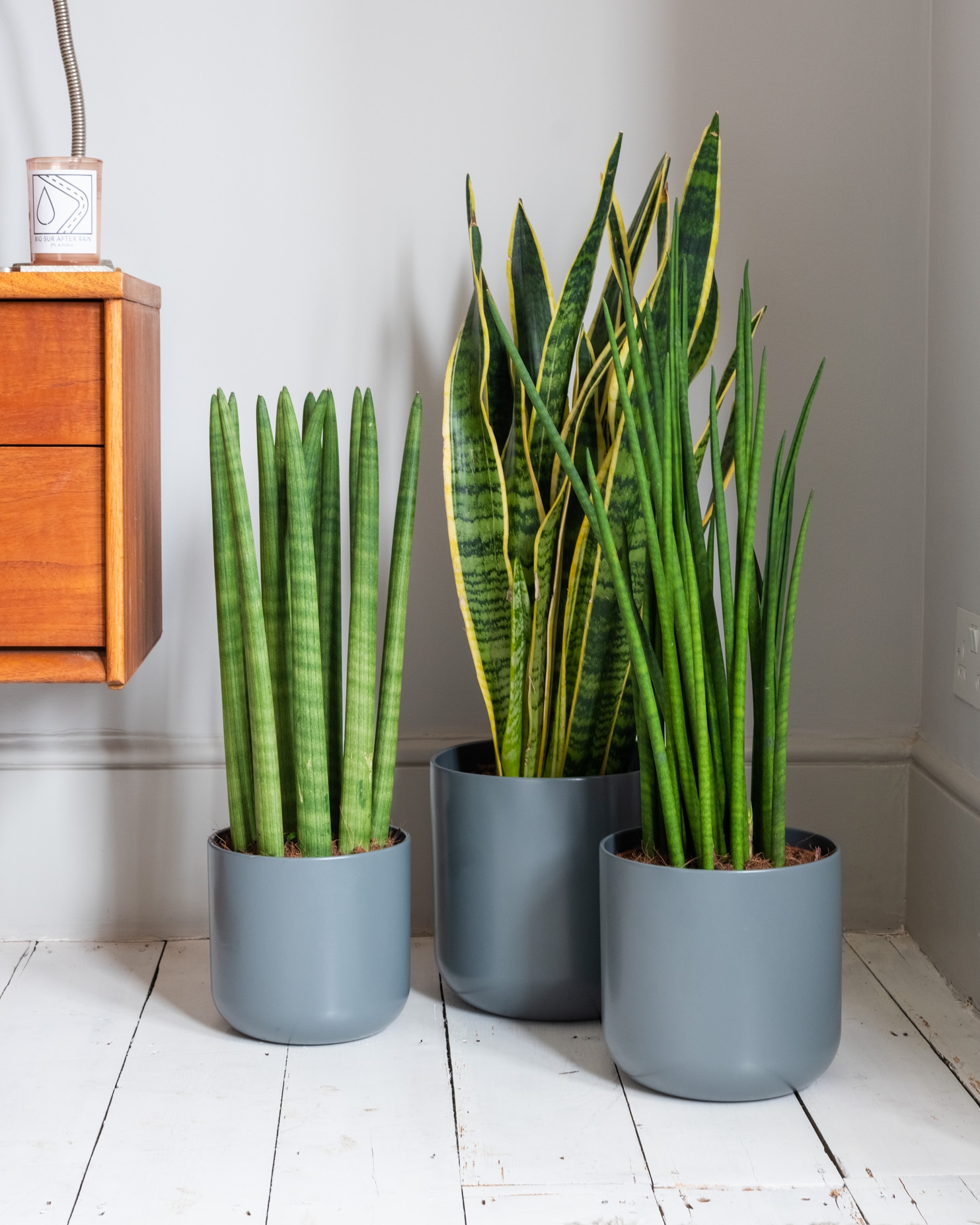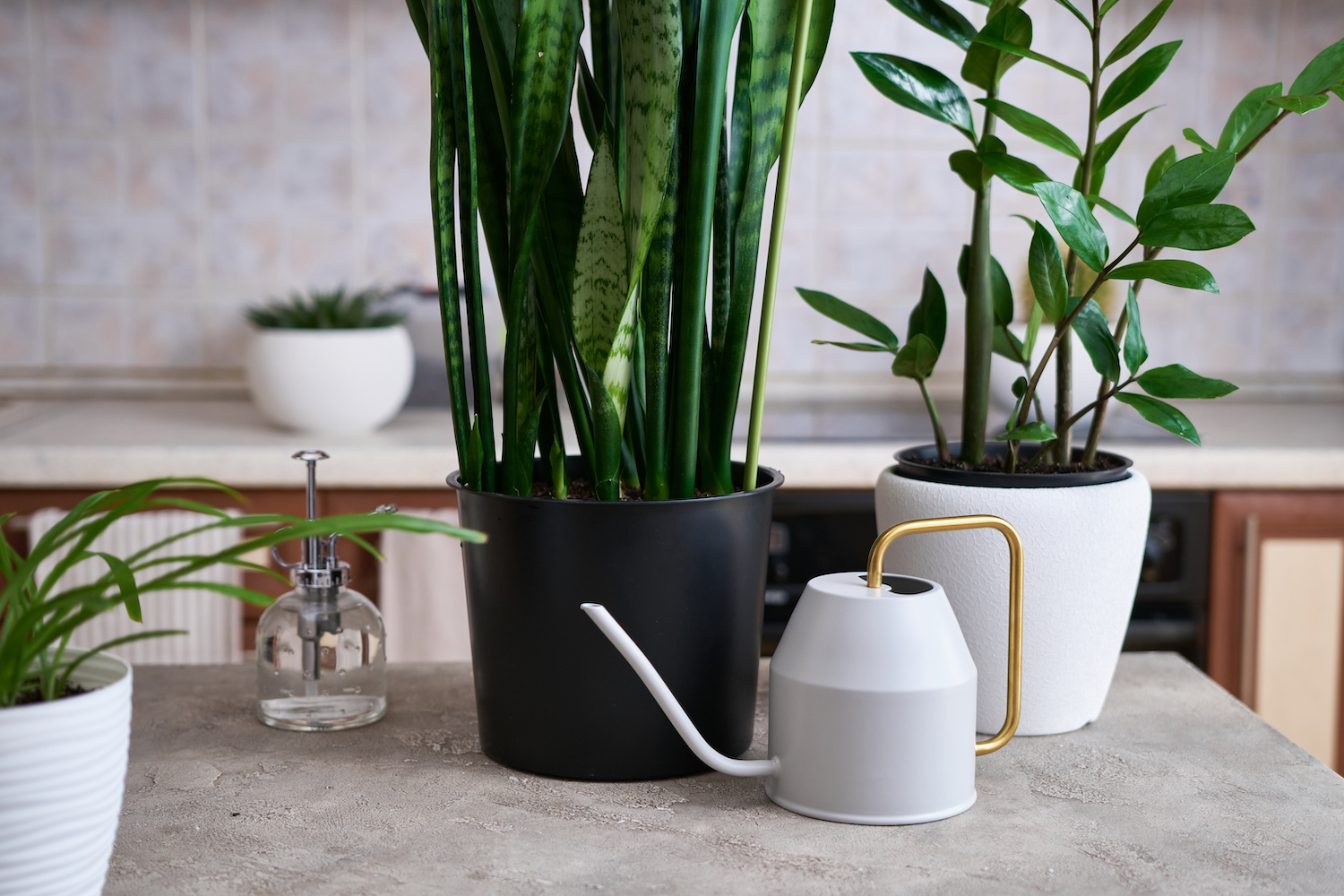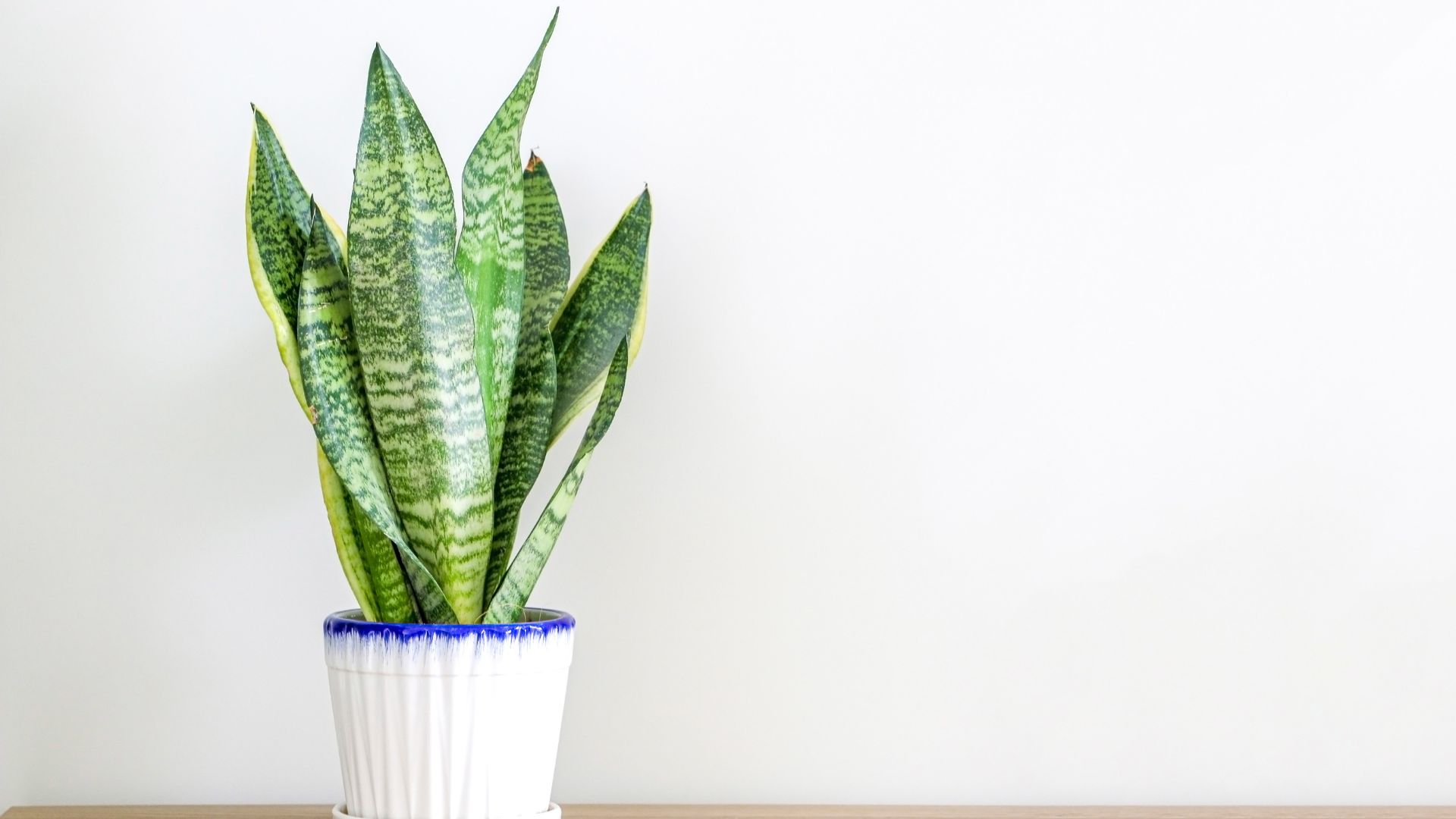How Often Should I Fertilize My Snake Plant? Avoid Over-Fertilizing by Following These Rules
This low-maintenance houseplant needs some love...just not too much, so be sure to follow its care needs properly

Snake plants, also known as Sansevieria, are often included in the best plants for beginners lists due to their low-maintenance requirements.
Snake plant care is super-easy. They won't mind too much if you forget to water them. These plants can survive a little neglect. However, if you do want your snake plant to thrive and grow rather than just survive, a little care can go a long way.
Knowing how often to fertilize a snake plant can enable it to grow faster and stronger. Here's what our plant experts recommend you do.
How Often Should You Fertilize a Snake Plant?

Understanding how often to water a snake plant is similar to learning how often to fertilize it. In both cases, too much of a good thing can be bad. Plant fertilizer certainly falls into this category. Also, where your Sansevieria is located and the time of year will have a bearing on when to fertilize your houseplant.
"If your Snake plant is in a high-light spot, you can fertilize as often as each time you water it (as long as you don’t exceed the recommended application rates on the fertilizer package)," says Justin Hancock, horticulturist at Costa Farms.
"While fertilizer gives a Snake Plant nutrition to support lots of healthy growth, your plant does need good light levels to have enough energy to push out growth. Depending on the fertilizer product, you can fertilize as often as every watering or as little as once every year or so. If your plant is in low-light conditions, it's better not to fertilize frequently."
Justin continues: "It’s going to give you more bang for your buck if you fertilize your plant in the spring/summer months when there’s more light so your plant has more fuel for growth. The most important thing to keep in mind is to avoid over-fertilization, as this can damage the roots and potentially even kill the plant."
The Livingetc newsletters are your inside source for what’s shaping interiors now - and what’s next. Discover trend forecasts, smart style ideas, and curated shopping inspiration that brings design to life. Subscribe today and stay ahead of the curve.
"A liquid fertilizer once every three or four weeks in the growing period is a good rule of thumb, but at only half the normal strength," says William Davidson, author, Doctor Houseplant. "Do not allow the feed to spot the leaves and take care not to overfeed."
We recommend you try out this Liquid Silica Plant Supplement from Walmart, priced at $29.99.
How to Fertilize a Snake Plant (Correctly)

There are different types of plant fertilizer, so the method for fertilizing your snake plant will depend on which fertilizer you decide to use. If you enjoy watering houseplants, the first option Justin suggests may suit you. However, if you find plant care time-consuming, the second option will likely suit you better.
"The two main ways to fertilize houseplants like a Snake Plant are to either use a water-soluble fertilizer or a time-release fertilizer," says Justin. "Water-soluble fertilizers are mixed with water and added as you irrigate your plant.
"Different fertilizer formulations have different recommended application rates; weaker fertilizers may be used every time you water. However, stronger products may be limited to use no more than once every two weeks," explains Justin. !Time-release fertilizers, as the name suggests, release nutrients to your plant for weeks. So instead of a big dose of nutrients all at once like you get with water-soluble fertilizers, time-release products give a slow and steady supply of nutrition to the plant.
The expert says time-release fertilizers often come in the form of little pellets or granules (like this Osmocote Smart-Release Plant Food from Amazon) that can be sprinkled on the soil.
How Will I know if I've Over-fertilized My Snake Plant?

There are a few snake plant mistakes to avoid — and over-fertilizing your plant is one of them. This is where plant care gets tricky, as a snake plant that's had too much care does not look similar to one that's had too little.
"Fertilizers provide a lot of nutrients in the form of nutrient salts," says Justin. "If there are too many nutrient salts in the soil, it can damage or kill plant roots. An over-fertilized Snake Plant looks a lot like an under-watered snake plant, with yellowing or browning, limp leaves. As in both cases, the roots can’t pull enough moisture from the soil to support the leaves."
If you suspect you have over-fertilized your Snake plant, rinse the soil with water to wash the fertilizer through and allow your plant to drain before placing it back in its outer pot.
FAQs
How do I know if my snake plant is thriving?

"A healthy, thriving Snake Plant should have firm leaves with no yellow, brown, or black spotting or yellow/brown tips and edges," says Justin. "Most varieties are pretty consistently colored. Although, that doesn’t necessarily mean evenly colored, as variegated varieties can show multiple shades of green."
"These plants should have unblemished leaves with clean, sharp edges, and the spiny tips of the leaves must be intact or they will not grow," adds William Davidson.
Jacky Parker is a freelance lifestyle journalist and writer, producing a wide range of features for magazines and digital platforms. She has written for Livingetc and its sister titles, Homes & Gardens and Country Homes & Interiors for more than 15 years, both as a freelance contributor and as Acting Digital Editor and Acting Style Content Editor, regularly reporting on the latest interiors, gardens and wellness inspiration, speaking to experts in their respective fields, and discovering the best tips.
Jacky has also written for other publications, including Sunday Times Style, The Telegraph, Architectural Digest, House Beautiful, ELLE Decoration, Red, Grand Designs and more.